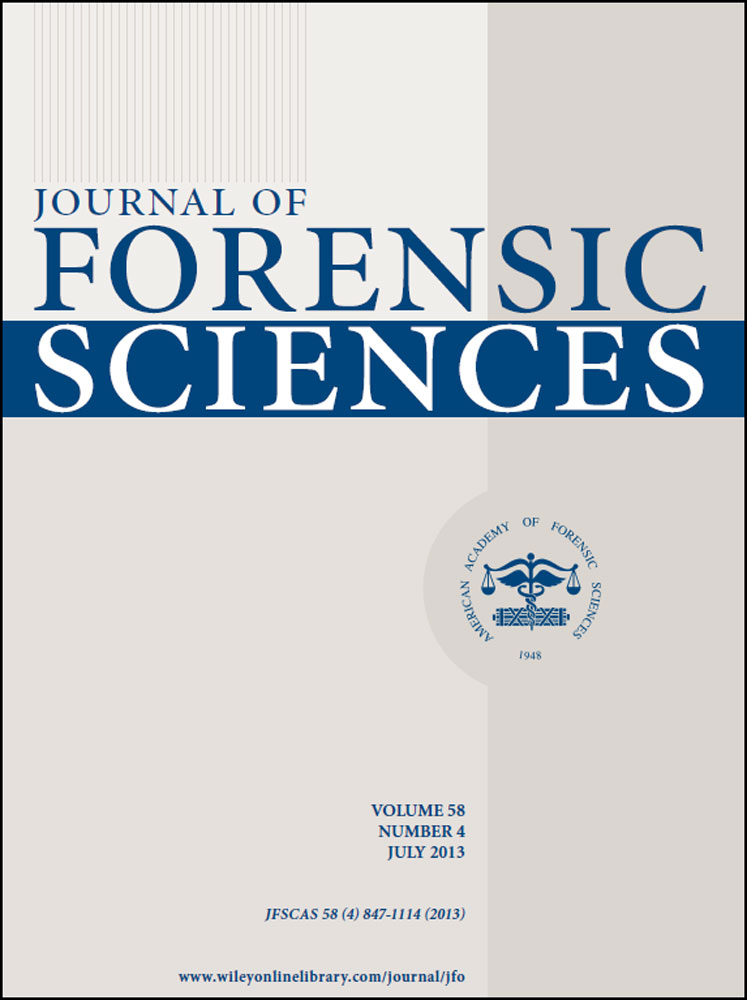The Compatibility of Fingerprint Visualization Techniques with Immunolabeling
[Correction added on June 17, 2013, after first online publication: The author's email address originally published was incorrect. The correct address appears here.]
Abstract
The chemical composition of a fingermark potentially holds a wealth of information about the fingermark donor, which can be extracted by immunolabeling. Immunolabeling can be used to detect specific components in fingermarks; however, to be applicable in the forensic field, it should be compatible with commonly used fingerprint visualization techniques. In this study, the compatibility of immunolabeling with two different fingerprint visualization techniques, magnetic powdering and ninhydrin staining, was investigated on fingermarks deposited on glass and on nitrocellulose membranes. With dermcidin as antigen of interest, immunolabeling was performed successfully on all developed fingermarks. We can conclude that immunolabeling is compatible with magnetic powdering and ninhydrin staining, which can be of great forensic value.




